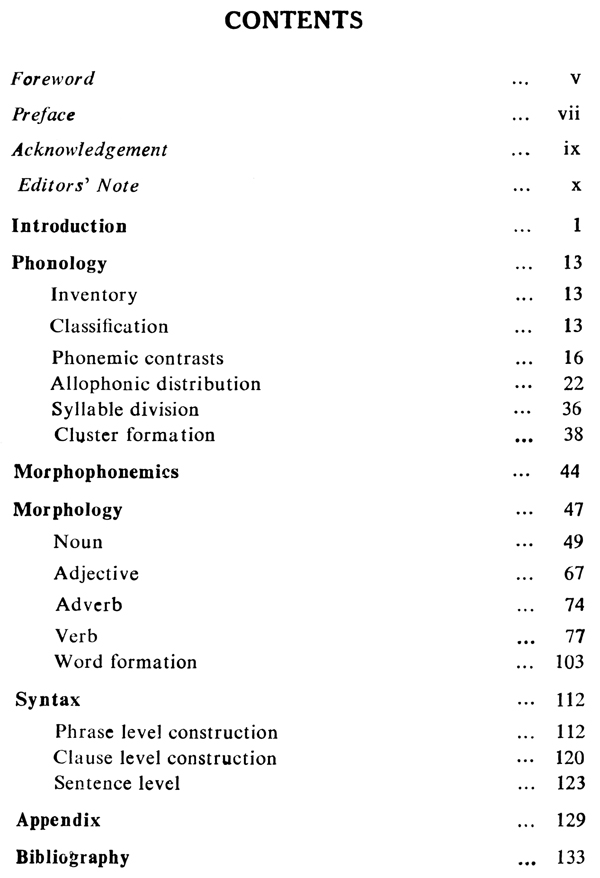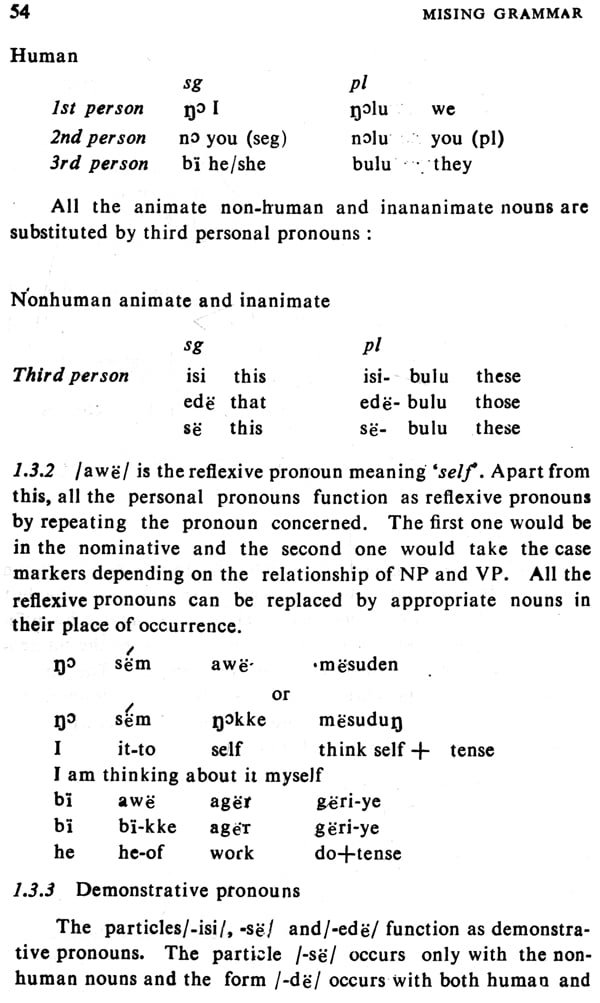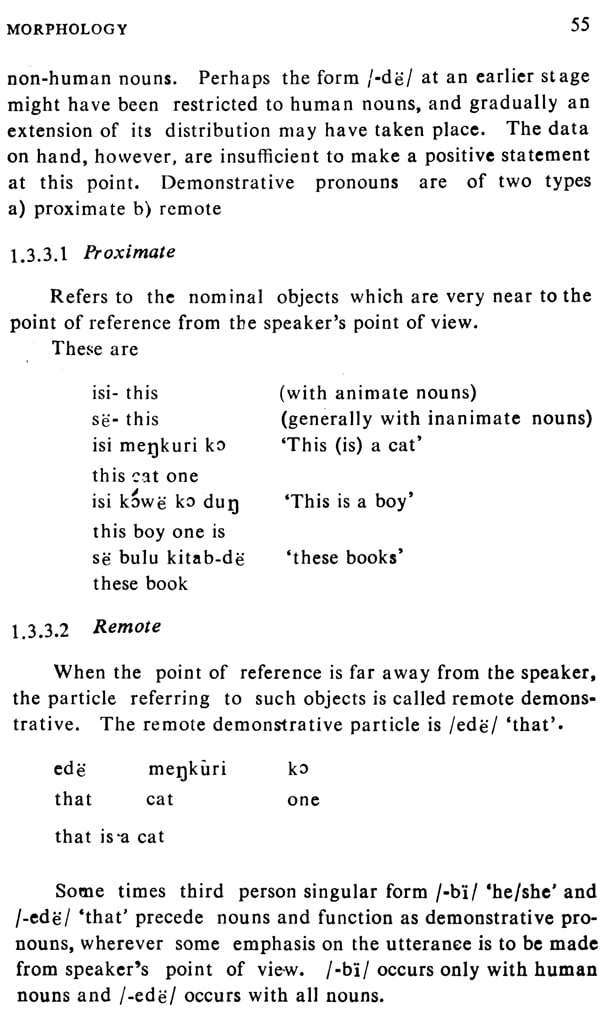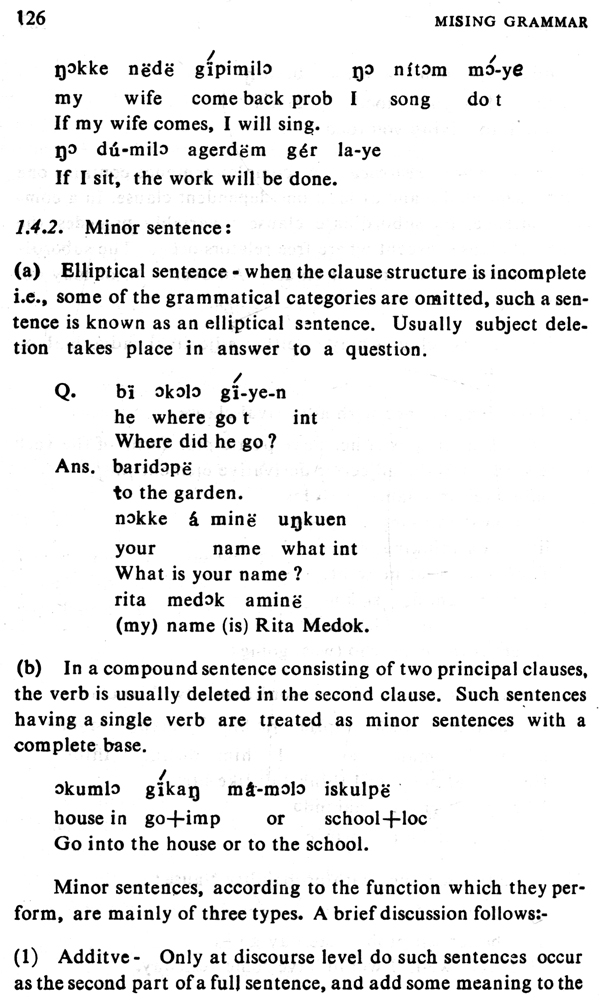
Mising Grammar (An Old and Rare Book)
Book Specification
| Item Code: | NAY035 |
| Author: | Bal Ram Prasad |
| Publisher: | Central Institute Of Indian Languages, Mysore |
| Language: | English |
| Edition: | 1991 |
| Pages: | 140 |
| Cover: | PAPERBACK |
| Other Details | 8.50 X 5.50 inch |
| Weight | 130 gm |
Book Description
One of the primary activities of the Institute relating to its work on tribal languages is writing a grammar. The grammar is not only the first step in the direction of codification of the language but also is a basic material for the teaching and learning of the language. It also provides materials for the typological and areal comparisons for languages and for studies of language universals. The theoretical notions about grammar have changed substantially in the recent decades and many of the notions are to be tested with data from various little-known languages. It is hoped that the grammar series of the Institute will fulfil at least partially these demands from linguists and language planners.
The grammars of various tribal languages, it is hoped, will lead to a handbook of Indian languages, which will be of great use to the students of linguistic in India. India has a long grammatical tradition and it is now absorbing the grammatical models developed in the west. It will be a worthy goal to achieve to develop a grammatical model for the description of Indian languages derived out of both traditional and modern developments.
The organization of the grammar is based on grammatical functions rather than on grammatical forms. This will help the new learner to find easily how the different functions, which he already knows and wants to express, are for mailed in his language. Since this Grammar is primarily meant for pedagogical purposes, theoretical discussions and justifications for a particular analysis are kept to a minimum. The Grammar. is divided generally into two broad categories of noun morphology and verb morphology. A description of adjectives follows noun morphology and a description of adverbs follows verb morphology. The chapter on syntax describes the order of the constituents at the surface level. There is also a chapter on word formation, which describes the ways in which words are formed and new concept are expressed.
Though the Grammar is primarily aimed at the language learner and the teacher, it is hoped that it will also be useful to Linguists interested typology and universals.
Data for the Grammar were collected in the field primarily from one informant by elicitation through word and sentence lists. They were then cross-checked with some other informants. The description may not be exhaustive and there might be gaps. There might be possibilities for alternative analyses. Comments and suggestions passed on to us will be useful to improve our future publications in this series.
The preliminary version of this grammar prepared by Sri Bal Ram Prasad when he left the Institute was revised to fill in the gaps and edited for making the press copy by his colleagues Sri G. Devi Prasad Sastry and Dr. P. T. Abraham. The data and analysis are that of Sri Bal Ram Prasad and the other two are not responsible for them. It is sad that Sri Bal Ram Prasad passed away prematurely before this grammar is published. This book will stand as a testimony for his love for the tribes.
Book's Contents and Sample Pages












